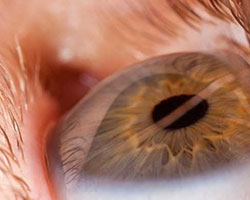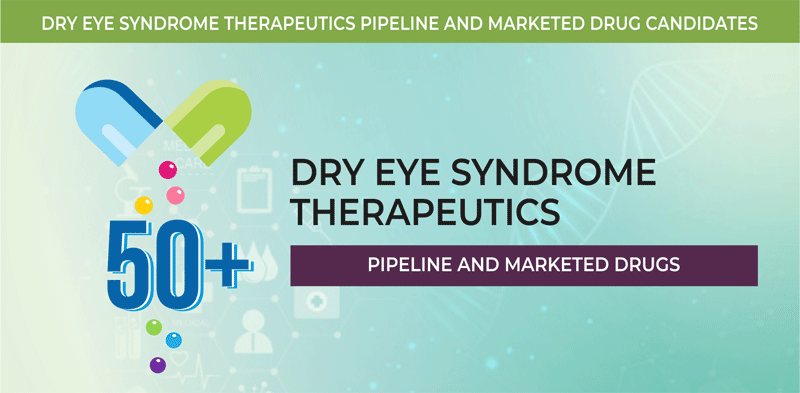
| Report Code: PP10273 | Published: May 2019 | Pages: 450+ | Available format: |
| Therapeutic Area(s): | Ophthalmology | Report Type: Indication Pipeline Reports |
Overview
Dry eye syndrome, also known as keratoconjunctivitis sicca (KCS), is a common eye disorder where the eyes don’t make enough tears. Blepharitis and meibomian gland dysfunction (MGD) are both very common causes of dry eye syndrome. Inflammation of the surface of the eye may also occur along with dry eye. If left untreated, this condition can cause pain, ulcers, or scars on the cornea, and some loss of vision. However, permanent loss of vision from dry eye is uncommon.

Tear deficient dry eyes and evaporative dry eye are the two types of dry eye syndrome. In tear deficient dry eyes disorder the lacrimal glands fail to produce enough of the watery component of tears to maintain a healthy eye surface. Whereas, evaporative dry eye occurs due to the inflammation of meibomian glands which make the lipid or oily part of tears that slows evaporation and keeps the tears stable. The dry eye symptoms include stinging or burning of the eye, heavy eyelids, and pain and redness of the eye.
The dry eye syndrome can be diagnosed using several tests such as tear film break-up time and Schirmer test. Tear film break-up time test helps to find out the duration of drying of eyes after blinking whereas, Schirmer test is performed to test tears using a filter paper. There is no cure for dry eye but there are some treatments that can help reduce the symptoms associated with it. Consumption of omega 3 and omega 6 fatty acids as well as using eye drops or artificial tears, and ointment which can be applied before going to the bed to keep the eyes moist overnight. Medications such as cyclosporin, an anti-inflammatory drug are being used to treat dry eye.
Various number of drug manufacturers are actively involved in the development of dry eye syndrome therapeutics. For instance, HanAll BioPharma is developing HL036 in partnership with Harbour BioMed, an anti-tumor necrosis factor (TNF) biobetter antibody to treat local inflammatory diseases. The Phase II results of the drug showed statistically significant improvements in the patients with dry eye syndrome. Also, in July 2016, the U.S. Food and Drug Administration (USFDA) approved Xiidra (Shire plc, Takeda Pharmaceutical Company Limited) for the treatment of signs and symptoms of dry eye syndrome.
Positive clinical trial results and adoption of collaboration strategies are enhancing dry eye syndrome therapeutics pipeline. Moreover, the issuance of patents helps in achieving different milestones in the form of grants and designations from the regulatory bodies and institutes, including the USFDA, the European Medicines Agency (EMA), and the National Institutes of Health (NIH), among others.
Pipeline Analysis
As of March 2019, the dry eye syndrome therapeutics pipeline comprises 50+ drugs in different stages of development.
Epidemiology Analysis
The report provides epidemiology forecast of dry eye syndrome for seven major markets, which includes the U.S., Japan, and EU5 countries (the U.K., Germany, France, Italy, and Spain). It covers prevalent population and treated patient population for the period 2016–2028. According to an article published in F1000Research in 2018, global prevalence of dry eye syndrome ranges from 20-50%.
Competitive Landscape
Some of the key players involved in the development of dry eye syndrome therapeutics are HanAll BioPharma, Harbour BioMed, Redwood Pharma AB, Takeda Pharmaceutical Company Limited, Mitotech SA, TopiVert Pharma Limited, and Samjin Pharm Co. Ltd.
Report Insights
Some highlights of the report “Dry Eye Syndrome Therapeutics - Pipeline Analysis 2019, Clinical Trials and Results, Patents, Designations, Collaborations, and Other Developments” have been mentioned below: